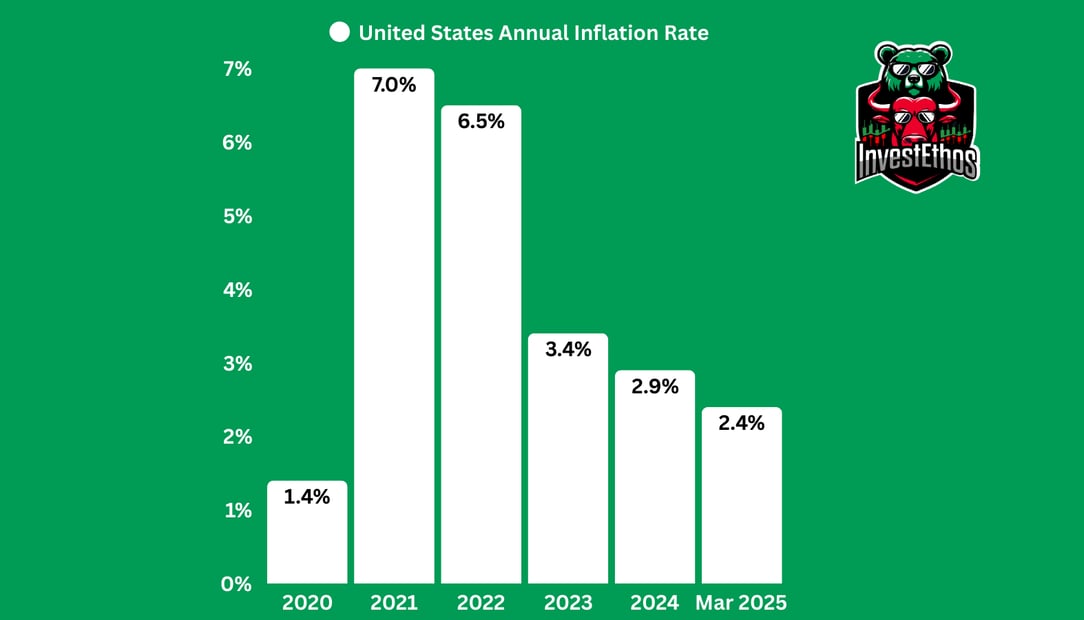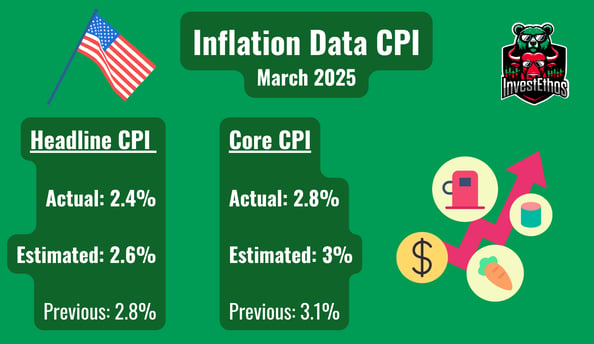

US Inflation Data
March 2025


In March 2025, the U.S. Consumer Price Index (CPI) experienced an unexpected decline of 0.1%, following a 0.2% increase in February. This marks the first decrease in several months, primarily attributed to a significant drop in energy prices, notably a 6.3% fall in gasoline costs.
On a year-over-year basis, the CPI rose by 2.4%, down from February's 2.8% increase. The core CPI, which excludes volatile food and energy prices, increased by 0.1% in March and 2.8% over the past 12 months, marking the smallest year-over-year rise since March 2021.
Despite this short-term easing of inflation, underlying pressures persist due to recent trade policies. In early April, President Donald Trump intensified tariffs on Chinese imports to 125%, following Beijing's retaliatory 84% duty on U.S. goods. A general 10% tariff on most U.S. imports remains in place. These measures, intended to bolster U.S. industry and fund tax cuts, have raised concerns about potential recession risks.
The Federal Reserve, which paused interest rate cuts in January, may consider resuming easing policies in June. Policymakers have expressed concern over the dual threat of rising inflation and slowing growth, citing anticipated tariff-driven cost increases. Economists forecast that inflation could peak at 4%, double the Fed's target, as tariff impacts permeate the economy.
While the recent decline in consumer prices offers a temporary reprieve, the broader economic outlook remains uncertain amid escalating trade tensions and their potential to reignite inflationary pressures.
Resources
Support
support@investethos.net
© 2025. All rights reserved.
